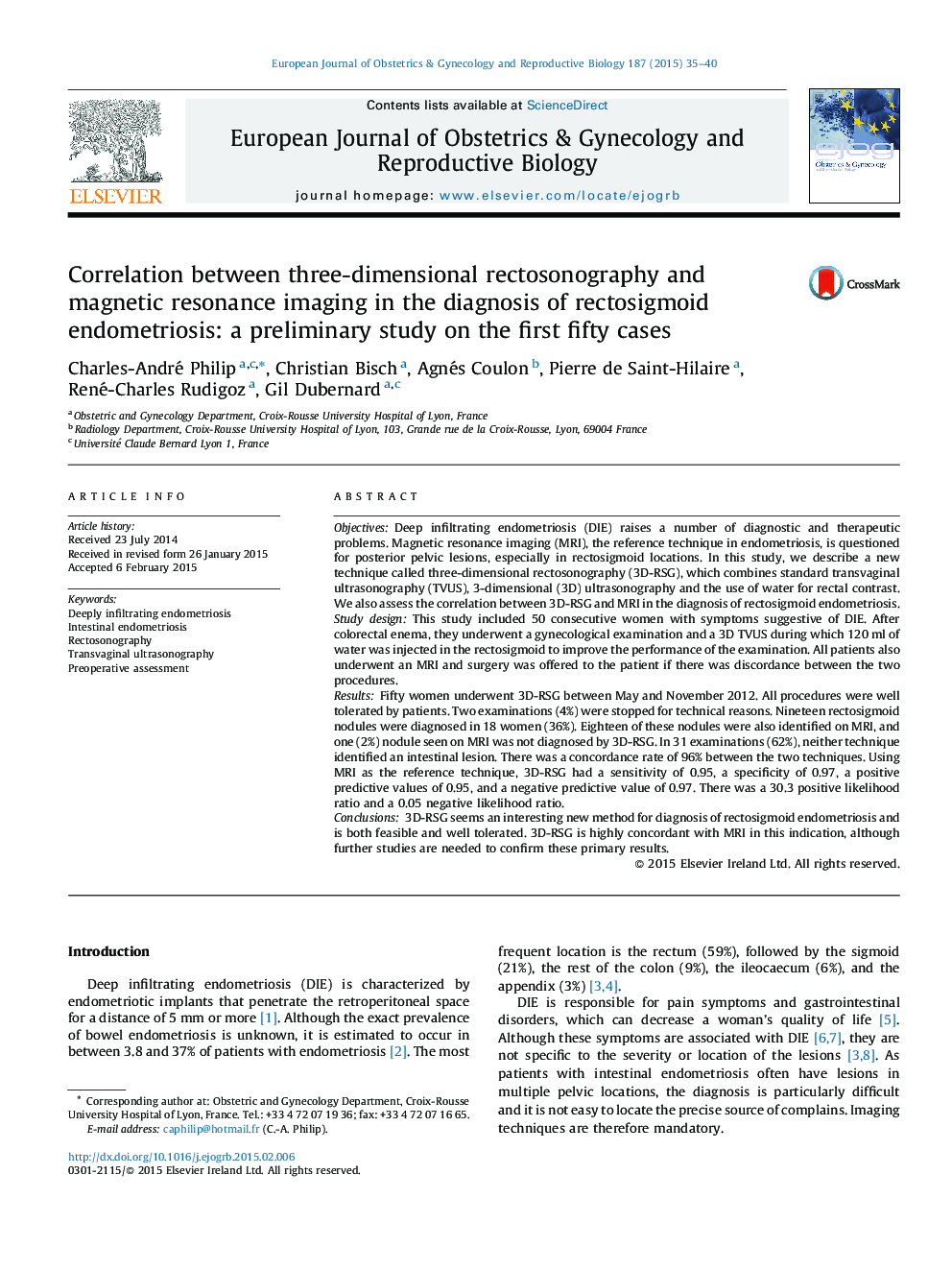| کد مقاله | کد نشریه | سال انتشار | مقاله انگلیسی | نسخه تمام متن |
|---|---|---|---|---|
| 3919596 | 1599794 | 2015 | 6 صفحه PDF | دانلود رایگان |
ObjectivesDeep infiltrating endometriosis (DIE) raises a number of diagnostic and therapeutic problems. Magnetic resonance imaging (MRI), the reference technique in endometriosis, is questioned for posterior pelvic lesions, especially in rectosigmoid locations. In this study, we describe a new technique called three-dimensional rectosonography (3D-RSG), which combines standard transvaginal ultrasonography (TVUS), 3-dimensional (3D) ultrasonography and the use of water for rectal contrast. We also assess the correlation between 3D-RSG and MRI in the diagnosis of rectosigmoid endometriosis.Study designThis study included 50 consecutive women with symptoms suggestive of DIE. After colorectal enema, they underwent a gynecological examination and a 3D TVUS during which 120 ml of water was injected in the rectosigmoid to improve the performance of the examination. All patients also underwent an MRI and surgery was offered to the patient if there was discordance between the two procedures.ResultsFifty women underwent 3D-RSG between May and November 2012. All procedures were well tolerated by patients. Two examinations (4%) were stopped for technical reasons. Nineteen rectosigmoid nodules were diagnosed in 18 women (36%). Eighteen of these nodules were also identified on MRI, and one (2%) nodule seen on MRI was not diagnosed by 3D-RSG. In 31 examinations (62%), neither technique identified an intestinal lesion. There was a concordance rate of 96% between the two techniques. Using MRI as the reference technique, 3D-RSG had a sensitivity of 0.95, a specificity of 0.97, a positive predictive values of 0.95, and a negative predictive value of 0.97. There was a 30.3 positive likelihood ratio and a 0.05 negative likelihood ratio.Conclusions3D-RSG seems an interesting new method for diagnosis of rectosigmoid endometriosis and is both feasible and well tolerated. 3D-RSG is highly concordant with MRI in this indication, although further studies are needed to confirm these primary results.
Journal: European Journal of Obstetrics & Gynecology and Reproductive Biology - Volume 187, April 2015, Pages 35–40
